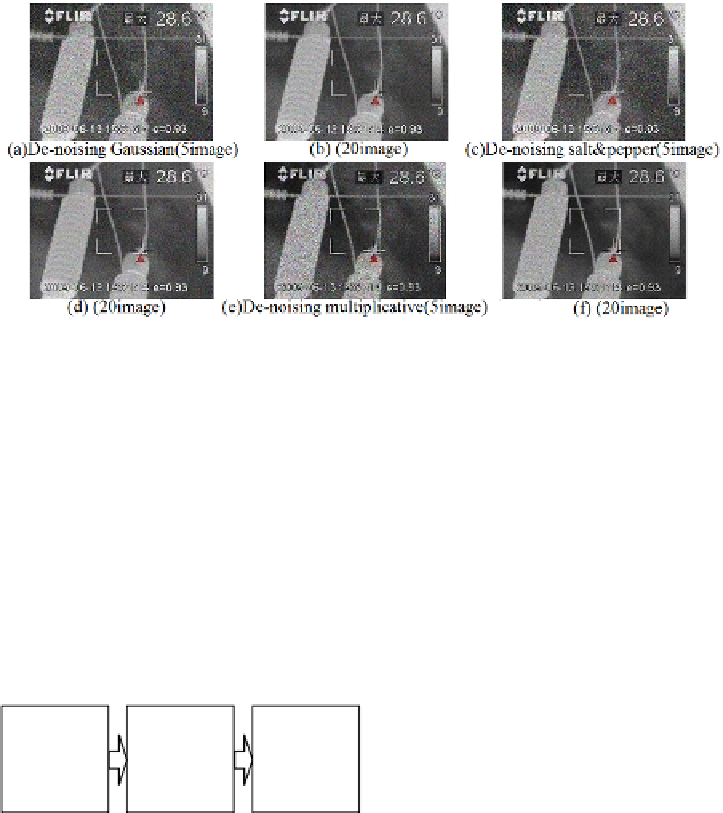Information Technology Reference
In-Depth Information
Fig. 4.
The results de-noised by multi-image average de-noising algorithm under the
three noises respectively
2.5 Wavelet Threshold De-noising Combined with Histogram
Equalization
2D discrete WT mainly solve analysis process of the 2D multi-resolution problem.
Assume that a 2D discrete image is denoted as
{j
(
u,v
)
}
, it can be broken down
to each resolution approximate component at each level. They are approximate
coecient
CA
j
, horizontal component details
CH
j
, vertical component details
CV
j
, diagonal details
CD
j
. Two-level wavelet decomposition and reconstruc-
tion processes are shown as Fig.5. The selection of wavelet threshold must be
J
&$
&+
&$
&$
&+
&$
&$
&+
&$
&+
&9
&'
&9
&'
I
XY
I
XY
&9
&'
&'
&9
&9
&'
&9
&'
D 7KH GHFRPSRVLWLRQ SURFHVV
E 7KH UHFRQVWUXFWLRQ SURFHVV
Fig. 5.
The two-level wavelet decomposition and reconstruction processes
larger than the maximum of the corresponding noise wavelet coecients exactly.
There are two coecient estimating methods: hard threshold de-noising, and soft
threshold de-noising. Since the constant error of soft threshold de-noising is little
generally, we choose the soft here. We useBirge-Massart penalty function to get
wavelet threshold by which process the decomposed wavelet coecients. Fig.6
shows all the single-decomposed parts of the image with Gaussian noise.
Here, the first level wavelet decomposition is shown only, the second is that
Fig.6(a) is decomposed once more. Then we eliminate Gaussian noise and multi-
plicative noisewhich are contained in the infrared image by this algorithm com-
bined with histogram equalization respectively. The results as Fig.7 illustrates










Search WWH ::

Custom Search